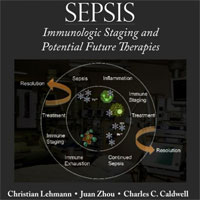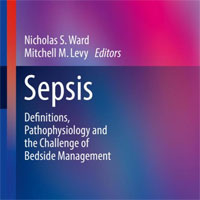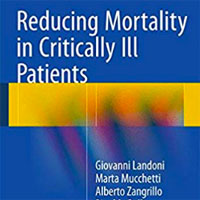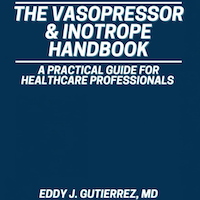Tag: cannulation
Pediatric Extracorporeal Cardiopulmonary Resuscitation ELSO Guidelines
Survival rates with good neurologic outcomes following conventional cardiopulmonary resuscitation (CPR) for cardiopulmonary arrest, either in the in-hospital (IH) or out-of-hospital settings, have improved but remain poor... read more
Early Intervention for the Treatment of Acute Laryngeal Injury After Intubation
This study suggests that early intervention for patients with postintubation laryngeal injury was associated with a decreased duration of tracheostomy dependence, a higher rate of decannulation, and fewer surgical procedures... read more
Monitoring of the Adult Patient on VA ECMO
Venoarterial extracorporeal membrane oxygenation (VA ECMO), a form of mechanical circulatory support, had its origins in the operating room as cardiopulmonary bypass and has evolved for use in the intensive care unit and... read more
Consequences of Cardiopulmonary Bypass: What the Intensivist Needs to Know
Cardiopulmonary bypass (CPB) is common for most cardiac surgeries. CPB drains blood from the heart and returns it to the proximal systemic circulation allowing perfusion during the operative period. It was pioneered in 1951... read more
Safety and Feasibility of Early Physical Therapy for Patients on ECMO
With a highly trained multidisciplinary team and a focus on restoring function, it is feasible and safe to deliver early rehabilitation including standing and ambulation to patients on extracorporeal membrane oxygenation... read more
A Randomised Trial of High-flow Nasal Cannula in Infants with Moderate Bronchiolitis
In patients with moderate bronchiolitis, there was no evidence of lower rate of escalating respiratory support among those receiving HFNC therapy. The analyses included 268 patients among the 2621 infants assessed for... read more
How I Approach Weaning from Venoarterial ECMO
Weaning from VA-ECMO remains a challenging but critically important step in device management. The key is to balance minimizing complications associated with device support with the potential for hemodynamic deterioration... read more
COVID-19 NIV: Helmet vs Mask
Over the past few weeks there has been a shift in the management of critically ill COVID-19 patients. Many seem to have moved away from an intubate early strategy to the use of high flow nasal cannula (HFNC) and noninvasive... read more
How I Manage Drainage Insufficiency on ECMO
As the use of extracorporeal membrane oxygenation (ECMO) expands, a systematic approach to the management of complex technical issues, such as drainage insufficiency, is essential to improving patient outcomes. Due to... read more
Outcomes of VV ECMO When Stratified by Age
The purpose of this study was to evaluate survival to hospital discharge for patients on venovenous extracorporeal membrane oxygenation (VV ECMO) when stratified by age. We performed a retrospective study at single, academic,... read more
Ultrasound-guided Pleural Effusion Drainage With a Small Catheter Using the Single-step Trocar or Modified Seldinger Technique
Ultrasound-guided pleural effusion drainage by catheter insertion is a safe and effective procedure. The success rate is low when the effusion is loculated and septated. Both the trocar and the modified Seldinger techniques... read more
High-flow Nasal Cannula Oxygen Therapy for AHRF in Patients with CLD
A high-flow nasal cannula (HFNC) is a high-flow oxygen supply device developed in recent years and is increasingly being used to treat acute hypoxemic respiratory failure (AHRF) in intensive care unit (ICU). Patients with... read more
Ultrasound-Guided Peripheral Intravenous Access
Obtaining intravenous (IV) access is a basic necessity in the emergency department. So what do you do when you are unable to place a peripheral IV, and your go-to external jugular line is not an option? You certainly do not... read more
Comparing Percutaneous to Open Access for Extracorporeal Membrane Oxygenation in Pediatric Respiratory Failure
The proportion of pediatric patients undergoing percutaneous extracorporeal membrane oxygenation cannulation is increasing. Mechanical and physiologic complications occur with both methods of cannulation, but percutaneous... read more
High Flow Nasal Cannula (HFNC) – Part 1: How It Works
The use of heated and humidified high flow nasal cannula (HFNC) has become increasingly popular in the treatment of patients with acute respiratory failure through all age groups. I first started using it as a pediatric intensive... read more
Choosing the Appropriate Configuration and Cannulation Strategies for ECMO
Extracorporeal membrane oxygenation (ECMO) is becoming a common procedure to support patients with severe cardio-circulatory or respiratory failure as well as in case of combined compromise of the two systems. Deciding which... read more
High Flow Nasal Cannula Use Outside of the ICU – Factors Associated with Failure
High FiO2 requirements, history of intubation, and cardiac co-morbidity are associative predictors of HFNC failure. Bronchiolitis patients may be treated with HFNC outside of the ICU with lower odds of failure. Two hundred... read more
7 Ways To Instantly Increase Your IV Success Rate
Stop making excuses for missed IV starts! Hit the vein on the first attempt with these 7 ways to instantly improve your IV success rate. To Instantly Improve Your IV Success Rate, Improve Your Tourniquet Skill. Oftentimes,... read more









